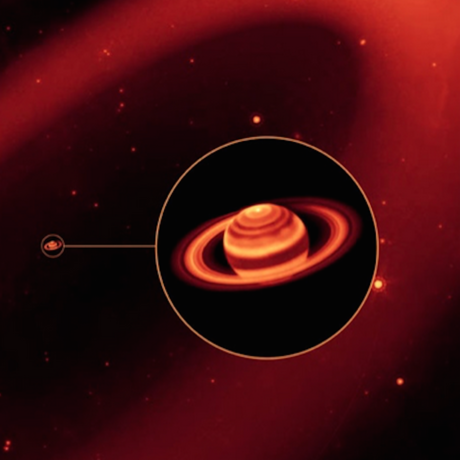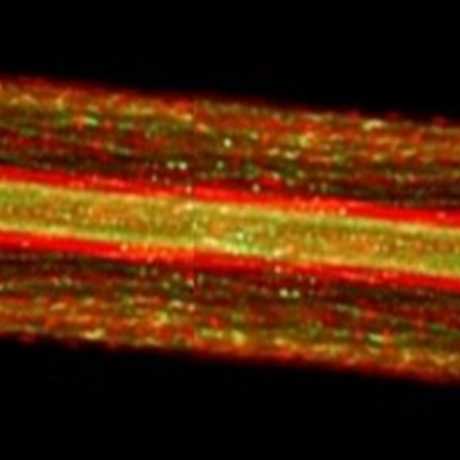Science News
Messier 78 and Giant Dust Storm on Mars

A Martian Global Haboob?
Astronomers are predicting that the surface of Mars may disappear from view in the next few months. No, it’s not going anywhere, and it’s not the ultimate magic trick. A new NASA study forecasts a major dust storm on Mars during the next few months—one that could fill the Red Planet’s atmosphere with an impenetrable veil of reddish dust.
Eat your heart out, Pig-Pen.
Dust storms on Mars are common, from the dust devils seen by NASA rovers to larger storms not unlike the haboobs that frequently occur in dusty regions of the Middle East, Northern Africa, Australia, and North America (but a lot bigger, despite the fact that Mars’s atmosphere is only one percent as dense as Earth’s).
“Every year there are some moderately big dust storms that pop up on Mars and they cover continent-sized areas and last for weeks at a time,” said NASA planetary scientist Michael Smith in 2015. At times, several small storms can merge, forming a much larger one, and under circumstances that scientists believe they’re beginning to understand, a single storm can envelop the entire planet for months. “Once every three Mars years (about 5.5 Earth years), on average, normal storms grow into planet-encircling dust storms, and we usually call those ‘global dust storms’ to distinguish them,” Smith said.
In 1971, such a global storm was occurring when Mariner 9 became the first spacecraft to orbit Mars, preventing it from seeing anything during its first two months of studying the Red Planet. When the dust began to settle, scientists had their first clear, closeup views of the geological wonders of Mars, including Olympus Mons, a volcano the size of Arizona with a summit 25 kilometers (16 miles) high, and 4,800-kilometer (3,000-mile) long Valles Marineris, a colossal rift that could stretch across the United States.
The 2007 dust storm posed potential issues for NASA’s Spirit and Opportunity rovers, which rely on solar panels to generate power from sunlight, unlike the more advanced Curiosity rover, which carries a thermonuclear generator. Not only are dust storms bad for NASA’s robots, blocking out sunlight and gumming up exposed mechanisms with abrasive dust particles, but they can also affect atmospheric temperatures, absorbing more heat than clear, dust-free martian air, cooling the surface and affecting global wind distributions.
Planetary climatologists once thought there was a simple seasonal rhythm to Mars’s dust storms, linking them to summer in the planet’s southern hemisphere, but researchers now have reason to believe that it’s a little more complicated. NASA atmospheric scientist James Shirley says that global dust storms may be related to Mars’s motion around the gravitational center of the Solar System, resulting in a cyclic effect on the planet’s momentum. Checking the historical record for correlations, Shirley found that global dust storms tend to occur when Mars’s momentum is increasing during the first part of the dust storm season. Noting that Mars is currently approaching the October 29 midpoint of its current dust storm season, he says, “We believe it is very likely that a global dust storm will begin within a few weeks or months of this date.”
Understanding the behavior of martian dust storms and being able to predict them will benefit future robotic and eventually human-crewed missions. For example, this announcement comes as the ESA/Roscosmos ExoMars mission approaches, scheduled to deliver the Schiaparelli lander to the surface on October 19. How might the occurrence of a global dust storm affect the mission?
For weekly weather reports from Mars, which include information about the planet’s dust storms, check Malin Space Science Systems’ website here. –Bing Quock
A Stellar Formation Dustbuster
Two weeks ago, I wrote about how NASA’s Wide-field Infrared Survey Explorer (WISE) read the dust left behind to let astronomers observe what happens when a star is devoured by a black hole. This week, I want to share how another infrared telescope, ESO’s Visible and Infrared Survey Telescope for Astronomy (VISTA), is peering through the dust to see star formation up close in Messier 78.
Messier 78 is a reflection nebula—a cloud of dust and gas that reflects the light of a star or stars—found 1,600 light years away in Orion, just above the left star in his belt. The cold dust provides a perfect location for star formation—producing young, bluish stars that mingle with red, fledgling stars. Because of its nebular nature, Messier 78 is difficult to observe, but in the infrared, VISTA supplies astronomers with crucial information. In the above image taken by the telescope, two blue supergiant stars, called HD 38563A and HD 38563B, shine brightly. The third incredibly bright star to the far right is the supergiant star HD 290861.
Besides big, blue, hot stars, VISTA can also see many stars that are just forming within the cosmic dust strewn about this region, their reddish and yellow colors shown clearly in the NGC 2071 reflection nebula on the right of this image. Some of these are T Tauri stars. Although relatively bright, they are not yet hot enough for nuclear fusion reactions to have commenced in their cores. In several tens of millions of years, they will attain full starhood and will take their place alongside their stellar brethren lighting up the Messier 78 region. –Molly Michelson
Image: ESO


